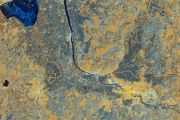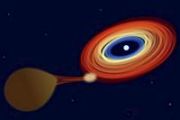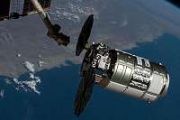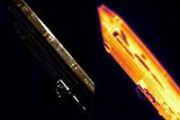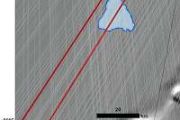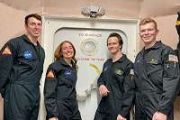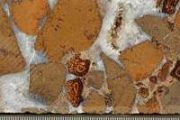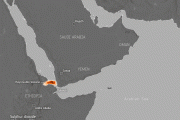
Copernical Team
Supporting life beyond Earth could be possible thanks to graphene innovation

Advanced manufacturing experts from Manchester have revealed what human life in space could look like—with a graphene-enhanced space habitat developed to meet anticipated demand for human settlements beyond Earth.
A community of specialists at The University of Manchester have teamed up with global architect firm Skidmore, Owings & Merrill (SOM) to research the design and manufacturing of space habitats for the space industry.
A small telescope past Saturn could solve some mysteries of the universe better than giant telescopes near Earth

Dozens of space-based telescopes operate near Earth and provide incredible images of the universe. But imagine a telescope far away in the outer solar system, 10 or even 100 times farther from the sun than Earth. The ability to look back at our solar system or peer into the darkness of the distant cosmos would make this a uniquely powerful scientific tool.
I'm an astrophysicist who studies the formation of structure in the universe. Since the 1960s, scientists like me have been considering the important scientific questions we might be able to answer with a telescope placed in the outer solar system.
Researchers analyze consequences of China space weapon test

University of Leicester experts in the military uses of outer space have urged further international dialog and 'cool heads' following flight tests of a new Chinese hypersonic missile system.
Reports of China testing a new orbital launch vehicle, known as Fractional Orbital Bombardment System (FOBS), have fuelled concerns about the nuclear weapon state's advancing military capabilities and possible consequences for the United States and its allies.
High-profile flight tests conducted in July and August saw a rocket launched into orbital flight, which later re-entered the atmosphere and released a maneuverable glide vehicle traveling at hypersonic speeds, in excess of five times the speed of sound.
Long-range missile systems like this can carry nuclear or non-nuclear warheads. With no official explanation from the Chinese government, some US commentators were quick to assume the worst—a new Chinese ability to bombard the United States from outer space with nuclear weapons.
But now, in a new policy brief for the Asia-Pacific Leadership Network by Dr. Bleddyn Bowen and Dr. Cameron Hunter, the international relations experts have called for cooler heads in response to the tests.
Hunting for marine plastic
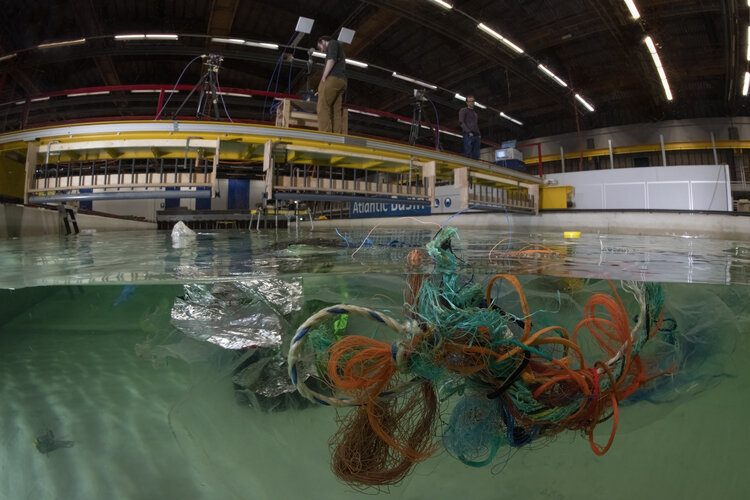 Image:
Hunting for marine plastic
Image:
Hunting for marine plastic Space for a Green Future
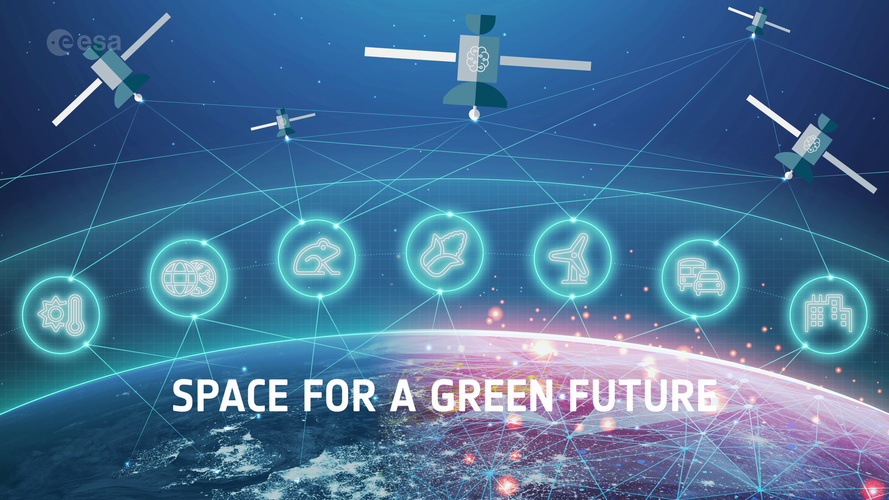 Video:
00:02:12
Video:
00:02:12
The climate crisis is the most urgent challenge faced by humankind – affecting every region, continent, and ocean on Earth. Space has an untapped potential to make a difference in tackling the threats and challenges faced by humanity. Satellites watch over Earth continuously, helping us to monitor, understand, model, predict and act on climate change and its related challenges.
As part of one of the three ‘Accelerators’ that will drive Europe’s increased use of space, the Space for a Green Future Accelerator will help Europe act to mitigate climate change. It will provide actionable information, helping form the
Change in the Arctic
 Video:
00:03:17
Video:
00:03:17
Satellites play a vital role in monitoring the rapid changes taking place in the Arctic. Tracking ice lost from the world’s glaciers, ice sheets and frozen land shows that Earth is losing ice at an accelerating rate. Currently more than a trillion tonnes of ice is lost each year. The sooner Earth’s temperature is stabilised, the more manageable the impacts of ice loss will be.
SpaceX launch delayed due to astronaut 'minor medical issue'

Final decision on Georgia spaceport permit delayed yet again

A federal agency has yet again pushed back a final decision on whether to allow the construction of a launchpad for commercial rockets in coastal Georgia.
The Federal Aviation Administration plans to release its decision on Spaceport Camden by Dec. 15 rather than this Wednesday, agency spokesman Steve Kulm said. An agency statement cited a delay caused by "ongoing consultation efforts." The final determination was originally expected at the end of July but now has been delayed at least three times.
Camden County, in the southeast corner of Georgia, wants to build the nation's 13th licensed commercial spaceport and has spent nearly 10 years and $10 million pursuing that goal. The FAA in June issued an environmental impact study that concluded building the spaceport would be its "preferred alternative."
That drew pushback from the National Park Service and its parent agency, the U.S. Department of the Interior. In a July 22 letter to the FAA, the Interior Department said a chance of rockets exploding and raining fiery debris onto the federally protected wilderness on Cumberland Island creates an "unacceptable risk.
Physicists discover how particles self-assemble
 A team of physicists has discovered how DNA molecules self-organize into adhesive patches between particles in response to assembly instructions. Its findings offer a "proof of concept" for an innovative way to produce materials with a well-defined connectivity between the particles.
The work is reported in Proceedings of the National Academy of Sciences.
"We show that one can progra
A team of physicists has discovered how DNA molecules self-organize into adhesive patches between particles in response to assembly instructions. Its findings offer a "proof of concept" for an innovative way to produce materials with a well-defined connectivity between the particles.
The work is reported in Proceedings of the National Academy of Sciences.
"We show that one can progra Better climate data through ten times more accurate satellite navigation
 Satellites provide important data on climate and the environment every day. According to initial tests, new software from RUAG Space can determine the real-time position of a satellite in space ten times more accurately than was previously possible. More accurate positioning data leads to more precise satellite data and helps to avoid space debris.
Every day, satellites provide important d
Satellites provide important data on climate and the environment every day. According to initial tests, new software from RUAG Space can determine the real-time position of a satellite in space ten times more accurately than was previously possible. More accurate positioning data leads to more precise satellite data and helps to avoid space debris.
Every day, satellites provide important d 







